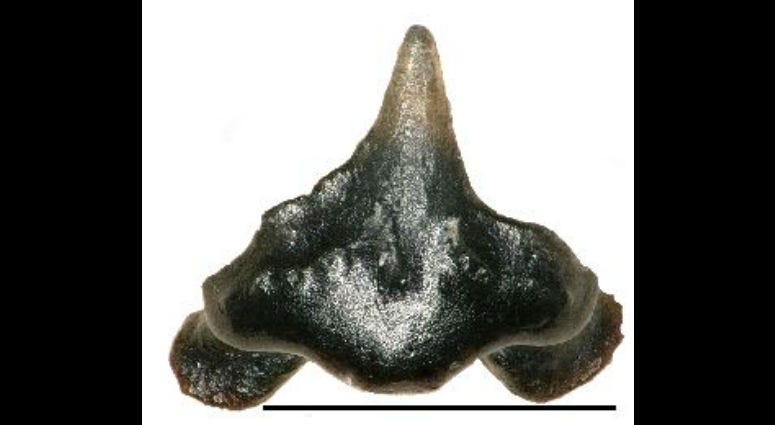
CHICAGO (WBBM NEWSRADIO) -- A new species of shark has been discovered by researchers at the Field Museum of Natural History, and it’s from the time when dinosaurs roamed the Earth.
Field Museum curator of dinosaurs Pete Makovicky said the teeth fossils of a shark now called Galagadon Nordquistae was found in the sediment that surrounded the T-Rex Sue which is on display at the Museum.
He said that, when the tyrannosaurus' skeleton was found in South Dakota, the sediment, known as matrix, was put in underground storage at the Field Museum.
When researchers began micro-sifting through that sediment, Makovicky said the fossils of three kinds of sharks and some rays were found, including teeth from a new species of shark.
“This shark lived at the same time as SUE the T. rex, it was part of the same world,” he said. “Most of its body wasn’t preserved, because sharks’ skeletons are made of cartilage, but we were able to find its tiny fossilized teeth.”
Makovicky said volunteer Karen Nordquist found 24 shark teeth, with three points that are shaped like the spaceship from the 80’s video game Galaga.
“Galagadon was less than two feet long—it’s not exactly Jaws,” Makovicky said. “It’s comparable to bamboo sharks living today. It probably had a flat face and was very likely camouflage-colored, since its relatives today have a camouflage pattern. It would have eaten small invertebrates and probably spent a fair amount of time lying on the bottom of the riverbed.”
As for the name of the new shark, Galagadon Nordquistae, Makovicky said the genus name comes from the teeth being in the form of the spaceship from the Galaga video game. He said the species name, Nordquistae, is in honor of the volunteer, Karen Nordquist, who first discovered them.
One of the teeth is on display in the same hall where Sue, the T-Rex is on display. A picture of it is blown up 100 times so you can see it.
But while Galagadon wasn’t breaking any size records, its discovery is making scientists question what they thought they knew about the area where SUE the T. rex was found.
“We had always thought of the SUE locality as being by a lake formed from a partially dried-up river—the presence of this shark suggests there must have been at least some connection to marine environments,” Makovicky said in a statement. “This wasn’t some Sharknado event—these animals were making their way up rivers from the sea.”
Makovicky calls the discovery, "a bit of a fortuitous find." He said it was a fun experience for him working on the shark teeth "because it literally is the smallest fossil I've ever worked on."
